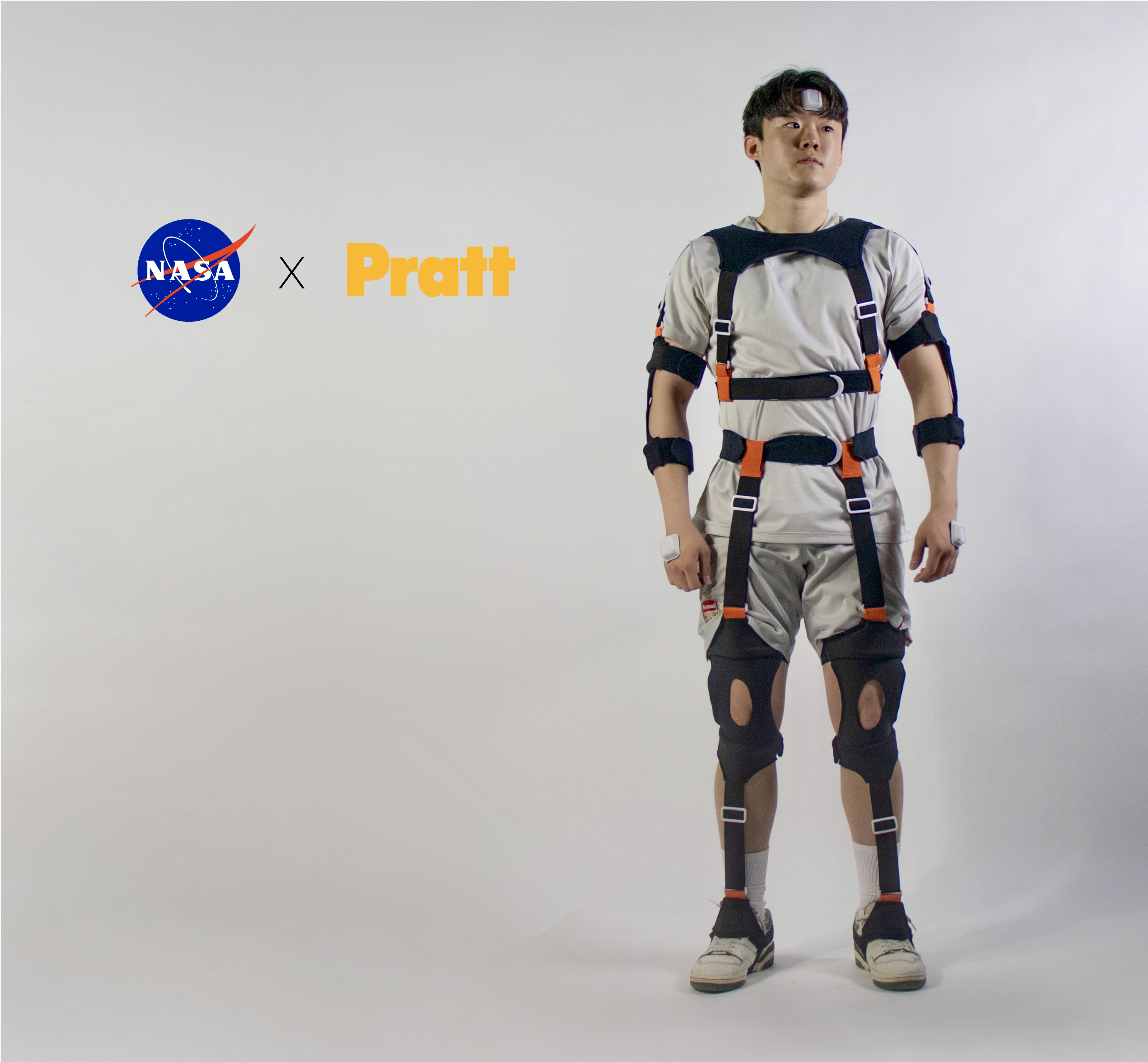WEARABLE TECH
IMU Suit Enhancement for Space Flight
Our team, Nebula, proudly accepted a challenge from NASA to address motion capture issues on the International Space Station (ISS) as part of Pratt Institute's wearable technology class.
We designed and fabricated a set of resizable harnesses that can hold 14 IMU sensors on the entire human body and three 3D printed TPU housings for head and hands.
This innovative prototype significantly reduces crew time compared to existing products and has been selected by NASA for testing during summer 2023. We are thrilled to have the opportunity to contribute to the advancements in space technology.
Team Nebula: Maseo Velasquez, Beatriz Gonzalez, Simon You
• PROJECT DURATION: 16 weeks
• SOFTWARE: Solidworks, Rhino 3D, Keyshot
• MODEL: Sewed soft goods, 3D printed parts
• PROJECT TYPE: Group
2022

︎PROJECT OVERVIEW

︎DESIGN RESEARCH
We analyzed typical workout movements on the ARED (Advanced Resistive Exercise Device) to identifty potential ccollision and abrasion points. Additionally, we collected IMU sensor dimensions and body measurement variations for sizing purposes.

︎CONCEPT DEVELOPMENT
During this process, I learned the importance of compromise, embracing diverse opinions, and making decisions with long-term effects in mind.
Developing prototypes with adaptable materials for different body types and conducting tests on real individuals was a rewarding experience.
Furthermore, the use of 3D-printed parts added an exciting element to our innovative project.

︎FABRICATION PROCESS

︎FINAL PROTOTYPE
![]()
︎DONNING PROCESS
Wearing our prototype took only 2 minutes and 30 seconds for me, however, to ensure an accurate assessment, we conducted tests with five random participants who were unfamiliar with the product. By calculating the average donning time, we were able to validate the significant reduction in crew time compared to existing products.

︎TESTING RESULT
At the conference, we attached real XSens IMU sensors to the garment, placing five on top to track upper body movement. The displayed data on the right (1500~3200) is from two sensors durinng push-ups. The sensors on the hand (DOT3) and back (DOT4) show thier motion in XYZ while active.After the conference, NASA evaluated our prototype for data measurement accuracy. The data below (1500~3200) displays the Z movement from two sensors during push-ups. The prototype successfully measures the data while significantly reducing crew time.



